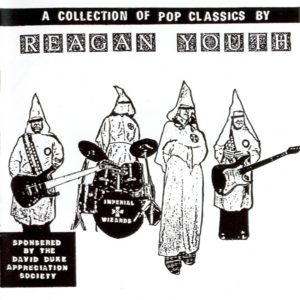
Yoko Ono – Yoko Ono / Plastic Ono Band Apple SAPCOR 17 (1970)
The Plastic Ono Band led by Yoko Ono made some startling music that never confined itself to any conventional rock structures. The album is a conceptual work that stays true to Ono’s roots in the visual arts (this is a Fluxus album!). Her piercing wails rarely take the form of words, which would only lessen the creativity.
Ono’s most notable song leads off the album, “Why.” Next she replies with “Why Not.” Ono cuts right to the fundamental question of existence: why? Her answer is as flippant as it is brilliant. Despite her aggressive attack she was always positive. Yoko is like a sunshine day in an urban ghost town. For all the hipster ambitions of the Plastic Ono Band, the bizarre interdependence on R&B grooves make it all the more complex. Yet, the album remains delicate throughout. Call it pretentious, but Plastic Ono Band is among the most provocative albums of its time.
Ono maneuvers through deep psychological recesses, as primal scream therapy prompted both this and John Lennon’s John Lenon / Plastic Ono Band record (recorded at the same time with the same musicians). Yoko’s album as bandleader is far more abstract musically than Lennon’s. She stays away from the intricacies of writing extended lyrics, but instead focuses more on improvisational tactics and pure concept. This is seen on “AOS,” recorded backstage rehearsing with The Ornette Coleman Quartet. Ono made some more music somewhat like this (Fly, etc.), but always with a little more emphasis on song structure.
It wasn’t a simple thing for a woman to break into the male-dominated avant-garde music scene, but Yoko Ono did it. Back in her Fluxus days she did perform with The Theater of Eternal Music (a/k/a LaMonte Young’s Dream Syndicate), which is a credential no Beatle had. Her unique vocal style (only comparable to Patty Waters, Linda Sharrock or maybe Mongolian throat singing) is the boldest aspect of the album. Not just some academic theory, Yoko screams out the entire album. This wasn’t music of widespread appeal, but it was important nonetheless (the bass line to “Why” crops up many places, like on Stereolab‘s “Emperor Tomato Ketchup”).
Significant to Plastic Ono Band are John Lennon and Ringo Starr‘s performances. Hardly before had Lennon played guitar so passionately. He proves that as a pure instrumental stylist he can hold his own with anybody. Ringo Starr lays down a thick R&B backbeat here that funkifies this avant-noise powder keg.
This is an amazing album. Years later, after bands like PiL and Flipper, Yoko was proven a visionary. Like the album jacket suggests, listen to it in the dark.









